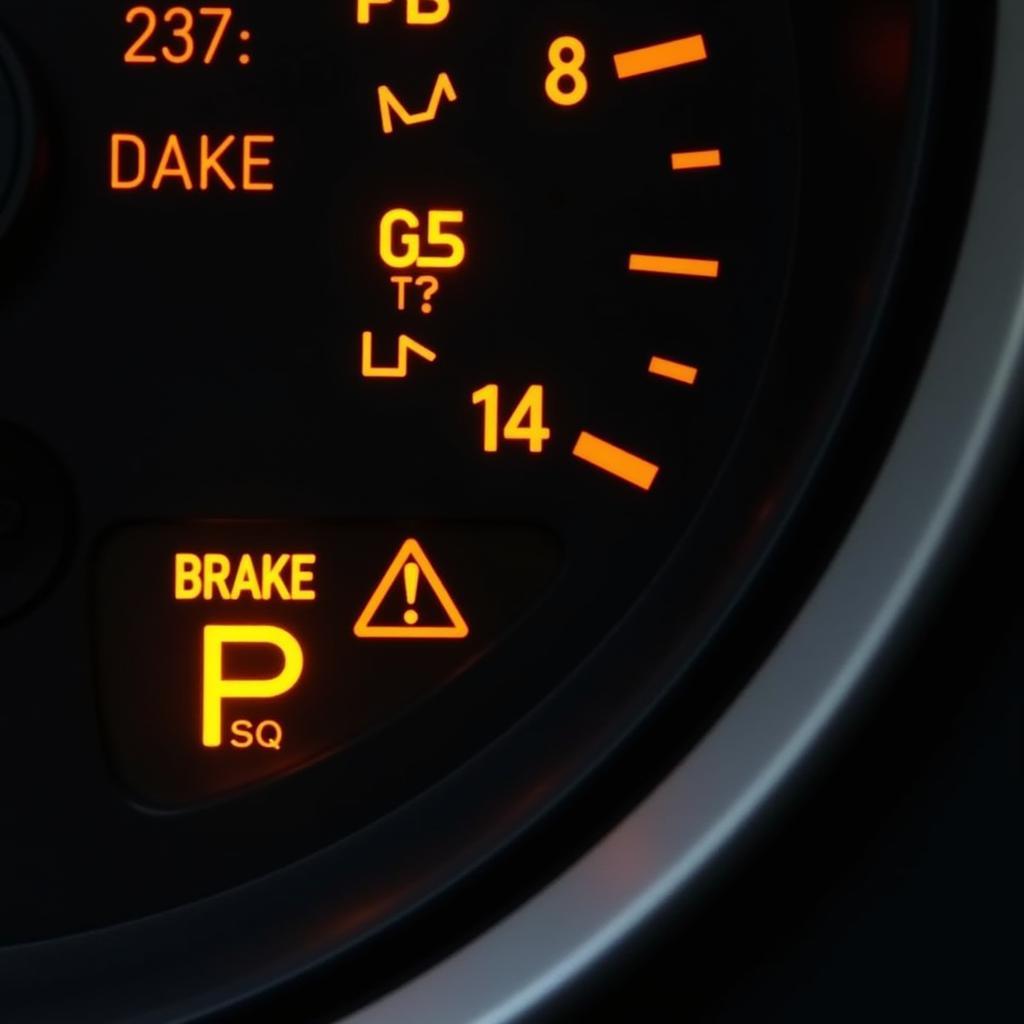A yellow or red brake warning light illuminating on your dashboard can be an alarming sight, but it doesn’t always mean a trip to the mechanic is in your immediate future. It’s simply your car’s braking system communicating that something needs attention. This article will guide you through understanding what triggers the mini brake warning light, how to diagnose the issue, and the potential solutions to get you back on the road safely.
Understanding Your Car’s Braking System and Warning Lights
Your car’s braking system is comprised of several components working in unison to slow down or stop your vehicle. These include:
- Hydraulic System: This system utilizes brake fluid to transmit force from the brake pedal to the brakes at each wheel.
- Mechanical Components: Disc brakes or drum brakes at each wheel create friction to slow the vehicle.
- Electronic Systems: Modern vehicles often incorporate Anti-lock Braking Systems (ABS) and Electronic Stability Control (ESC), which rely on sensors and electronic modules for optimal braking performance.
The mini brake warning light is part of this complex system. It illuminates for a variety of reasons:
- Parking Brake Engaged: The most common reason, easily resolved by disengaging your parking brake.
- Low Brake Fluid: This is a serious issue. Brake fluid can leak, leading to reduced braking power.
- Worn Brake Pads: Brake pads have wear indicators that make a noise when they become too thin, often accompanied by the brake warning light.
- Faulty Brake Light Switch: A malfunctioning switch can prevent brake lights from illuminating and trigger the warning light.
- ABS or ESC Issue: A problem with the ABS or ESC system, often indicated by their own dedicated warning lights on the dashboard.
Diagnosing the Problem: Why is My Mini Brake Warning Light On?
Identifying the root cause of the warning light requires a systematic approach:
- Check Your Parking Brake: Ensure the parking brake is fully disengaged. If the light goes off, you’ve solved the issue.
- Inspect Brake Fluid Level: Locate the brake fluid reservoir under the hood. If the fluid level is below the minimum mark, add the correct type of brake fluid (DOT 3 or DOT 4, as specified in your car’s manual).
- Listen for Unusual Noises: When applying the brakes, listen for any grinding, screeching, or squealing sounds, which can indicate worn brake pads.
- Inspect Brake Lights: Have someone press the brake pedal while you check if all brake lights are functioning properly. If not, it may indicate a faulty brake light switch.
When to Seek Professional Help
While some issues like a disengaged parking brake or low brake fluid are straightforward to address, others require the expertise of a qualified mechanic. If:
- The warning light persists after checking the basic steps mentioned above,
- You notice a significant decrease in braking performance,
- You hear unusual noises while braking, or
- You suspect a problem with the ABS or ESC systems,
it’s crucial to seek professional help.
Mini Brake Warning Light: Frequently Asked Questions
Q: Can I drive my car with the mini brake warning light on?
A: While it may be tempting to ignore, driving with the brake warning light on can be dangerous. It’s best to address the issue promptly to ensure your safety and prevent further damage to your car’s braking system.
Q: How much does it cost to fix a mini brake warning light issue?
A: The cost of repair varies greatly depending on the underlying problem. Simple fixes, like topping off brake fluid or replacing a faulty brake light switch, are relatively inexpensive. However, if the issue stems from a more complex problem like a faulty ABS module, the repair costs can be significantly higher.
Q: How often should I get my brakes checked?
A: It’s generally recommended to have your brakes inspected annually or every 12,000 miles, whichever comes first. However, if you notice any changes in braking performance or hear unusual noises, have them checked immediately.
Don’t Ignore the Warning!
The mini brake warning light is a vital safety feature. Ignoring it can lead to dangerous situations and potentially costly repairs. By understanding its meaning and taking the appropriate steps, you can ensure the safety and longevity of your vehicle. Remember, a little preventative maintenance goes a long way.
For further guidance on brake warning lights in specific car models, you can refer to our articles on brake light warning bmw and vw brake wear warning light.

